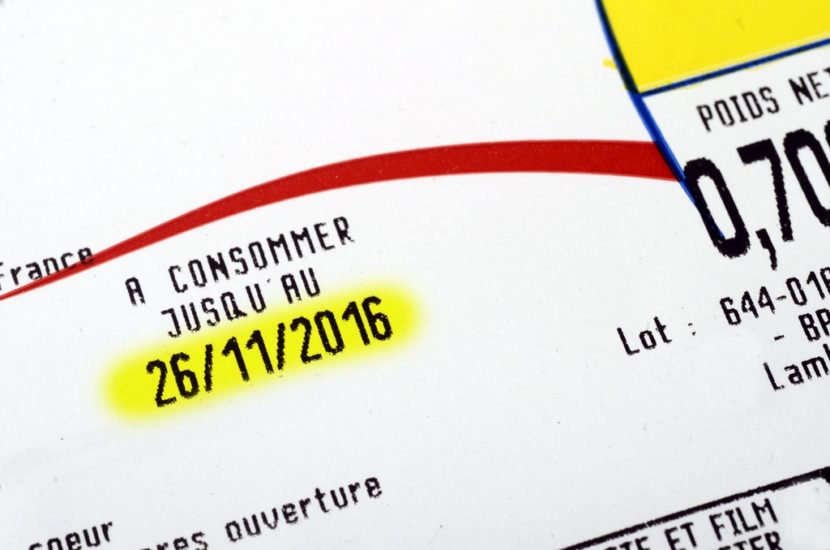Date Labelling as a Food Safety Challenge: Manufacturers Need Better Guidelines
By Jaan Koel
From a food safety perspective, date labelling presents a challenge to many food producers and processors. Terms like “best before,” “use by,” “expires on,” “packaged on,” “freeze by,” “sell by,” etc., are not regulated, and, with few exceptions, manufacturers are not legally obliged to use date labelling. This creates confusion in the marketplace, and the risk that food that is safe to eat is thrown out, and food that is unsafe to eat is consumed by uninformed members of the public who are so overwhelmed by the variety of different date labels they see that they end up ignoring them altogether.
In the United States, date labelling is commonly used for dairy, eggs, meat, and shellfish, and some other products. A “pack date” is required for poultry products, along with a lot number for USDA-certified eggs. Some local governments, such as the City of New York, require expiration dates on milk cartons, despite the fact that New York State has no date labelling requirements. Nine States don’t use date labelling at all, except for baby food, which is legally required to carry a “use by” or “expires on” label.
Nine States don’t use date labelling at all, except for baby food, “Best by,” typically has more to do with specifying optimum nutrition, texture, and flavor than it does with food safety.”
“Expires on” is usually also generally used for meat, dairy, and other sensitive products that could cause illness if consumed past their time limits. “Best by,” on the other hand, has more to do with specifying optimum nutrition, texture, and flavor for most foods than it does with food safety.
Waste Not, Want Not
The issue of food waste is gaining increasing attention in many areas of the food industry, as consumers throw food out unnecessarily after it goes past its “best by” date. Many foods are perfectly safe to eat after they’ve passed this date but, because consumers falsely assume “best by” is equivalent to “expires on” and connected to food safety, they get thrown out anyway. That’s one of the reasons we end up wasting up to 60 per cent of the food we produce—some 160 billion pounds annually in the US, for instance—which has a price tag of $165 billion. And that doesn’t even include environmental costs, such as water, energy, land use, and other resources.
Some Pointers
GRACE Communications Foundation of New York, NY, focuses on food safety and health issues in the food industry. They’ve provided some good labelling rules of the road for manufacturers and processors to keep in mind:
- Make “sell by” dates visible only to the trade, not to consumers. “Sell by” is for stock rotation purposes and has nothing to do with “best by,” “expiry,” or safety.
- Eliminate the use of quality-based dates on non-perishable, shelf-stable items. They’re not needed, although a message stating “best within X days of opening” could be included. Use clear language and choose a place on the package that’s easy to see and read.
- “Freeze by” is a good idea for foods that can be frozen, as it reduces food waste through better storage. It also results in food that is consistently good-tasting and nutritious because it goes into the freezer immediately after being harvested.
State, provincial, and federal governments and agencies, such as the FDA and USDA, for the most part haven’t yet started regulating food labelling, although, nutritional, ingredient, and allergen labelling is clear and well understood. Clearer date labelling regulations are needed, so processors and producers can provide better food safety guidance to their customers, and meet growing concerns over food waste.
About the Author
Jaan Koel is a respected food safety writer with a substantial portfolio developed over many years of front line writing experience. He began contributing to GFSR six years ago and is a regular contributor to other industry leading business-to-business publications. Aside from his expertise in the area of article writing, he has developed a strong credibility writing in the areas of corporate communications, public relations, government communications and marketing.

-
 FeaturedRisk management
The Cost of a Breach: What a Cyberattack Could Mean for Food Safety Recalls
FeaturedRisk management
The Cost of a Breach: What a Cyberattack Could Mean for Food Safety Recalls
-
 FeaturedRisk management
Securing the Food Chain: How ISO/IEC 27001 Strengthens Cybersecurity
FeaturedRisk management
Securing the Food Chain: How ISO/IEC 27001 Strengthens Cybersecurity
-
 FeaturedRisk management
Revolutionizing Food Safety Training: Breaking Out of the “Check-the-Box” Mentality
FeaturedRisk management
Revolutionizing Food Safety Training: Breaking Out of the “Check-the-Box” Mentality
-
 GFSI Standards
GFSI 2025: Building Trust, Tech-Forward Solutions, and Global Unity in Food Safety
GFSI Standards
GFSI 2025: Building Trust, Tech-Forward Solutions, and Global Unity in Food Safety
-
 FeaturedFood Safety
Integrated Pest Management: Strategies to Protect Your Brand’s Reputation
FeaturedFood Safety
Integrated Pest Management: Strategies to Protect Your Brand’s Reputation
-
 FeaturedFood Safety Culture & Training
No Open Door Policy: Challenges That Impact Pest Control in Food Processing Plants
FeaturedFood Safety Culture & Training
No Open Door Policy: Challenges That Impact Pest Control in Food Processing Plants




